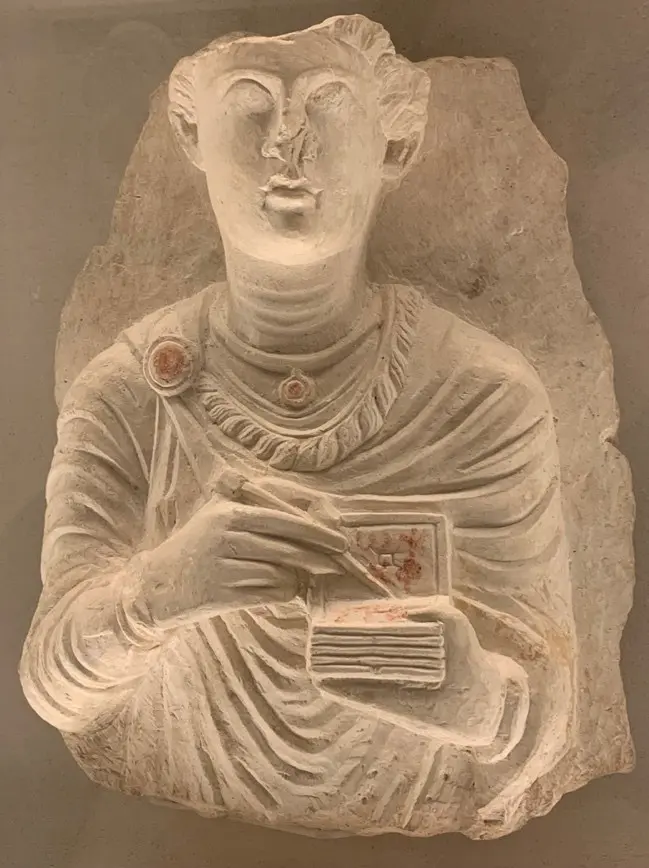

An Immense Graveyard
My Louvre by Antoine Compagnon

An Immense Graveyard
The other day, as I was walking amid the Near Eastern Antiquities, an obvious fact suddenly flashed through my mind: the Louvre wouldn’t be much if weren’t for the worship of the dead. I admit it’s a banal thought, but I suddenly saw everything I love at the Louvre through that prism, including Germain Pilon’s Valentine Balbiani, reclining on her elbow and peacefully reading for eternity (Richelieu, room 214, LP 397). I was standing before a large display case exhibiting a whole series of Palmyrene funerary reliefs dating to the first three centuries of the Common Era: men holding a vase, a box, beturbaned women dressed in tunics, their names often inscribed in an epitaph. I think it was their number that impressed me most, as if I had been transported to a graveyard or a whole graveyard had been transported here, into this museum room. Of all the dead, I looked for the one that moved me more than all the others. And I settled on this young boy (Sully, room 315, AO 18174). What sets him apart is the necklace, the brooch, the twisted braid of his cloak, and above all the two objects he holds—the stylus in his right hand and the tablets in his left, where we glimpse the final letters of the Greek alphabet. This child was a schoolboy snatched from life as he was finishing to learn the alphabet. No inscription. We do not know his name, but the gentleness of this relief testifies that he was loved.